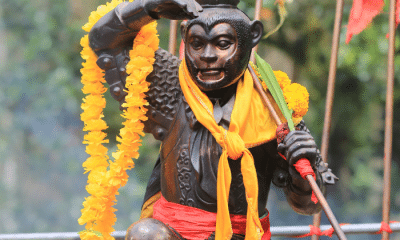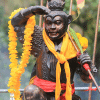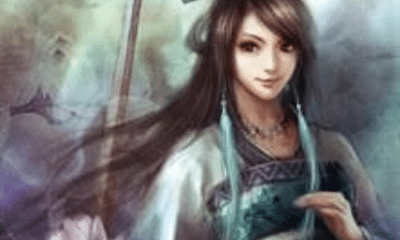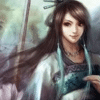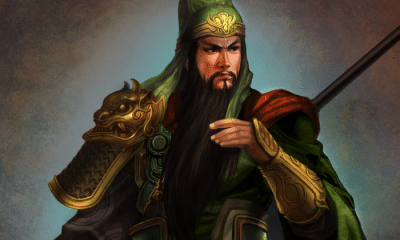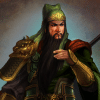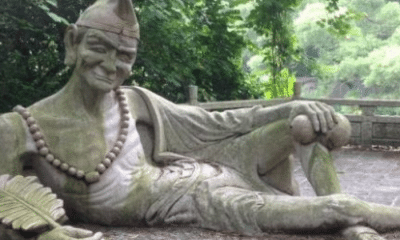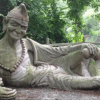
Chinese
Is the Story of Shennong Myth or History?
Is the Story of Shennong Myth or History?
In Chinese folklore Shennong is one of the first kings of the ancient world. How much of his myth is based in fact, though?
Chinese history has traditionally claimed that their country was first ruled by the Three Sovereigns, the earliest prehistoric kings. They were followed by the Five Emperors who expanded the basic skills of the sovereigns to create Chinese culture.
Shennong was one of these kings, usually considered to be the last. While his people had some rudimentary skills, such as making fire and building shelter, they suffered from disease and starvation.
Shennong’s contributions to knowledge would make the lives of his people longer and more comfortable. He created agriculture, social events, and medicine to improve the welfare of his people.
Such inventive cultural heroes are not uncommon in ancient religions, but the period of the Three Sovereigns and Five Emperors is somewhat unique. Following the inventions of humanity from the Stone Age through the Bronze Age, these stories show how culture developed over many centuries.
The Ancient King Shennong
According to legend, Shennong is one of China’s most ancient rulers.
He is usually counted among the Three Sovereigns, the ancient kings who preceded the establishment of the Empire. These early kings were deified by their descendants but were shown as barely human even when they were alive.
Shennong, like the other sovereigns, had a skull made of iron, goat-like horns, and a bronze forehead. Despite his nearly monstrous appearance, however, he was revered as a great ruler.
When Shennong came to power, the people of China were sickly and weak. They had no knowledge of agriculture or medicine to improve their lives.
Shennong, however, was a wise and inventive man. Seeing his people’s great suffering, he spent his reign teaching them how to live better.
He invented the hoe and plow so people could till the earth and control where their crops grew. Irrigation was developed so that the fields and rice paddies had ample water.
He created the axe so they could clear more land for planting. The logs they cut could be used as firewood to make them more comfortable and cook the food they grew.
For drinking water, he taught them to dig wells. This made the task of collecting water easier and provided a cleaner source so fewer diseases spread.
When the people harvested the first crops from their new fields, Shennong also created new ways for them to manage their food supplies. He figured out how to store grain safely and instituted weekly markets so the people could trade foods and other supplies.
Shennong created the first calendar so the people knew when to plant and harvest. The celebrate the invention of agriculture, the sovereign also established the first harvest festival.
His people were now well fed, but disease and injury continued to plague them. With their food supplies secured, Shennong turned his mind to improving the people’s health.
Shennong experimented with herbs to create beneficial teas. He learned to measure a person’s pulse and check other vital signs to determine which tea was best for them.
He created acupuncture to relieve many ailments. He supplemented this with moxibustion, burning dried mugwort on specific points of the body.
Under Shennong’s rule the people of China became happier and healthier than they had ever been before. His son Huangdi, the Yellow Emperor, carried on his father’s medical knowledge and improved on it.
Unfortunately, Shennong’s search for medicine cost him his life. Rather than risk any of his people he tested the effects of different herbs on himself, and died after eating a poisonous flower.
Shennong was deified as Yaowang, the Medicine King. He was revered not only as a great inventor but also as an ancestor of the Chinese people.
My Modern Interpretation
Chinese tradition claims that the Three Sovereigns and Five Emperors were historical figures and the ancestors of the Chinese people.
The existence of these ancient rulers is impossible to confirm. They are dated to a period from 2852 to 2070 BC, but written historical records from China do not exist from before the 13th century BC.
Like most deified ancestors in ancient cultures, it is unlikely that Shennong and the other ancient rulers were real historical figures. This does not mean, however, that there is no truth in the stories.
Shennong is credited with a staggering number of inventions. While no single man could have single-handedly introduced so many technologies to his society, the inventions themselves are real.
Most of Shennong’s inventions would have been accurate in the development of Stone Age civilizations.
Stone tools like the axe had existed for tens of thousands of years but agriculture was a much later development. The simple plows and hoes that Shennong created were, as the stories implied, major innovations.
Cultivation, food storage, and organized trade were not created in a single lifetime as the story says. In the timeline of human history, however, these innovations occurred and spread at a rapid pace.
Most historians believe that rice cultivation was started in China sometime in the 8th century BC, long before Shennong and the other sovereigns were said to have lived.
The other sovereigns had similarly inventive reigns. Shennong’s predecessors had taught their people how to make fire, use slash-and-burn methods to clear fields, and build houses.
The Five Emperors expanded on these inventions and continued to develop the culture. They introduced more refined skills like writing, silkworm cultivation, and metalworking.
While it can’t be said that any real cultural memory existed of the invention of fire, Shennong and his peers seem to indicate some recognition of the way in which society developed over time.
In Chinese folklore, the basic skills of their culture developed over the course of several hundred years. This is still an abridged timeline, but it is much more realistic than the nearly instantaneous development of technologies like agriculture that are found in other traditions.
While Shennong cannot be called a historic figure, it is possible that he represents some awareness of history. The period of the Three Sovereigns and Five Emperors shows that the Chinese people recognized that their ancestors had developed their culture over a period of time rather than at creation.
In Summary
Shennong is one of the Three Sovereigns of ancient China, the kings who ruled before the establishment of the Empire. These kings created Stone Age technologies in China such as building and the use of fire.
Shennong’s contribution was in agriculture. He created tools, irrigation, and even storage techniques to ensure that his people were fed well.
He is also credited with inventing China’s earliest medicines. These included herbal teas and the traditional practice of acupuncture.
He was said to have died while testing the properties of herbs for use in medicine. A yellow flower he tasted was poisonous, so Shennong gave his life to help people live better.
While traditional histories have claimed Shennong and the other ancient rulers as the country’s ancestors, they supposedly lived a thousand years before the first surviving written records. It is unlikely that they were literal historic figures.
Some historical truths exist in their stories, however. Rather than learning skills like agriculture and building overnight as is the case in many other myths, the stories of China’s early rulers is a fairly accurate depiction of the gradual introduction of increasingly complex technologies.
Shennong and the other ancient kings of China may not represent real figures in history, but they do represent the gradual creation of Chinese culture over the course of time.


